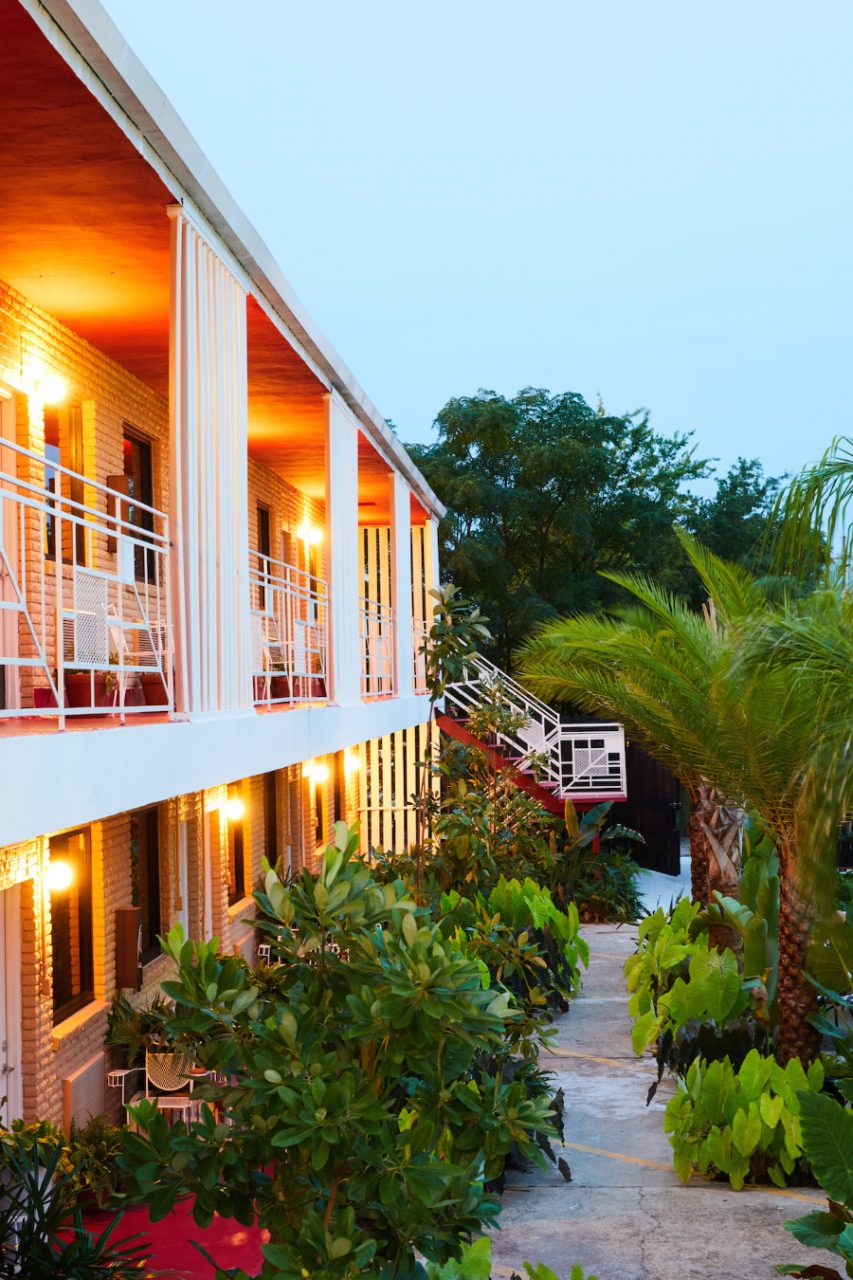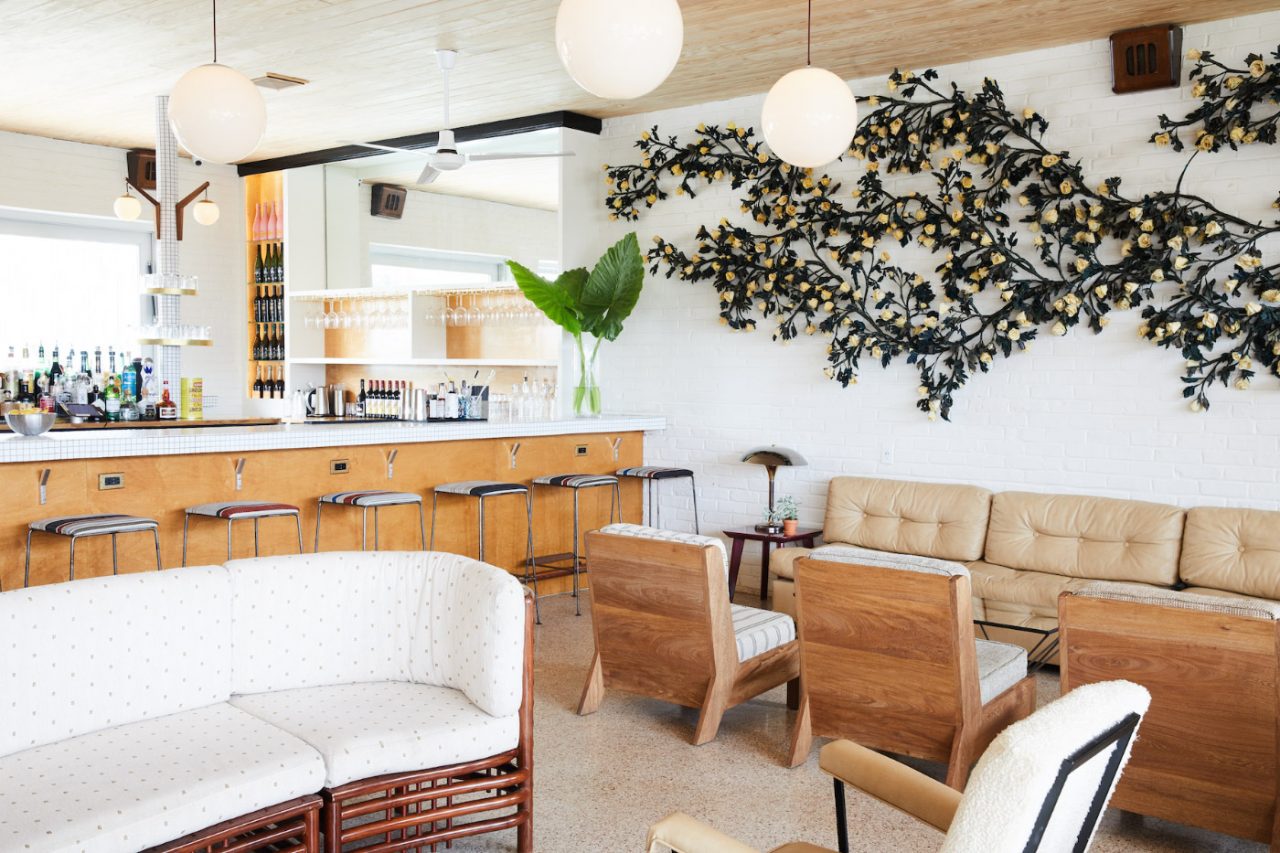Few cities wear their histories quite like New Orleans, where reinvention is always possible. That energy is epitomized by The Drifter Hotel, where hip locals gather with young travelers in a lushly planted courtyard around a pool that not too long ago was filled with dirt.
Formerly the Rose Inn Motel, a dingy by-the-hour place with popcorn ceilings and smoke-stained carpets, the new 20-room hotel is a study in renewal on a limited budget—all within the guidelines of tax credits that mandated the keeping of historically significant elements, down to the painted stripes on the parking lot. It’s “a nod to 1950s midcentury architecture housed in a former motel,” said Jayson Seidman of Sandstone Hospitality Developments, who partnered with New Orleans architecture studio Concordia, interiors firm Nicole Cota Studio, and Costa Rican landscape design firm VIDA Design Studio to reimagine the all-American typology for a new century, while honoring its DNA.

Uncovering the property’s potential required digging, both in terms of research—like hunting down a vintage postcard on eBay that showed the motel in its heyday—and getting down the bones. The first step involved rethinking the property’s relationship to cars for today’s travelers, who are more likely to Uber to the French Quarter than show up in the family station wagon. That meant relocating parking to a less prominent spot and transforming the former lot into a social space, centered on the restored pool.
“Once we started selective demo, that’s when things got really exciting,” said Joel Ross of Concordia. “We were able to peel off the layers of carpet, paint, and Sheetrock that the subsequent owners had put in and reveal these long-standing, simple, natural materials that were there.” As the 1950s structure unveiled itself, the team built upon what they found. When installing new pipes in the lobby—a 2,000-square-foot enclosure that had been cobbled into an apartment—required ripping up some of the original terrazzo, they patched the floor with handpicked shards of marble that reference the original pattern but give it an updated, oversize look.


To keep that balance between old and new, interior designer Nicole Cota imagined an eccentric family of owners, each adding new layers of interest throughout the decades. “The most amazing properties I’ve seen here in New Orleans are the weird ones—artists’ homes that have been developed over a long period of time, evolved,” she explained. To create the look, Cota sourced vintage pieces and designed powder-coated outdoor chairs, complete with cup holders, and wood-backed loungers that she had fabricated by Mexa Design. A mix of Holly Hunt and Kravet textiles unify the new and found pieces. Pine tongue-and-groove paneling added period-appropriate interest to the ceiling (“a resourceful way to create bones that weren’t there,” she said), while plywood stained with three coats of polyurethane and a fresh application of Benjamin Moore’s China White in high gloss gave the space a new sheen—a move Cota calls her “favorite trick.”

Today, guests will find Instagram-worthy accents, like a palm-leaf mural by Alexandra Kilburn and a fiber-art installation, by Carlton Scott Sturgill, that climbs the brick, rather than clichés like fleur-de-lis and Mardi Gras beads. In the guest rooms, built-in furniture, white bath tile, and colorful cement floor tiles from Mexico offer an affordable update in which simple, off-the-shelf parts are combined to create a striking graphic look. The one thing guests won’t find is a TV—a move designed to encourage visitors to take advantage of the hotel’s public spaces and enjoy a part of the city not always on the tourist trail, something locals have already embraced.
“The beauty of what we’ve done,” said Seidman, “is creating a hope for New Orleans.”


